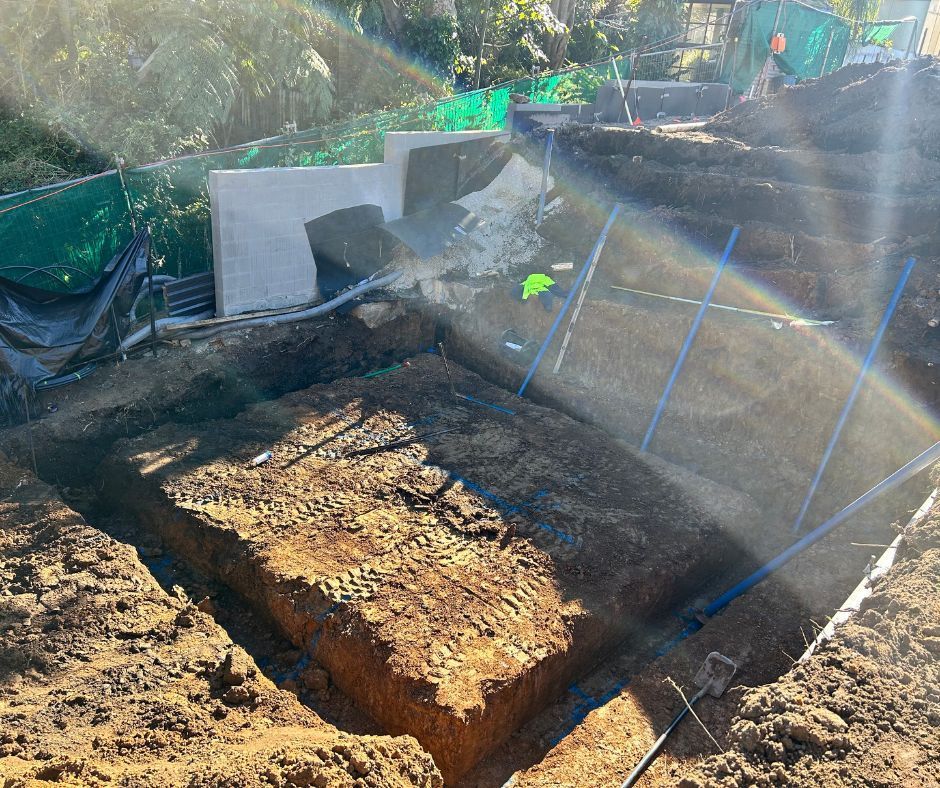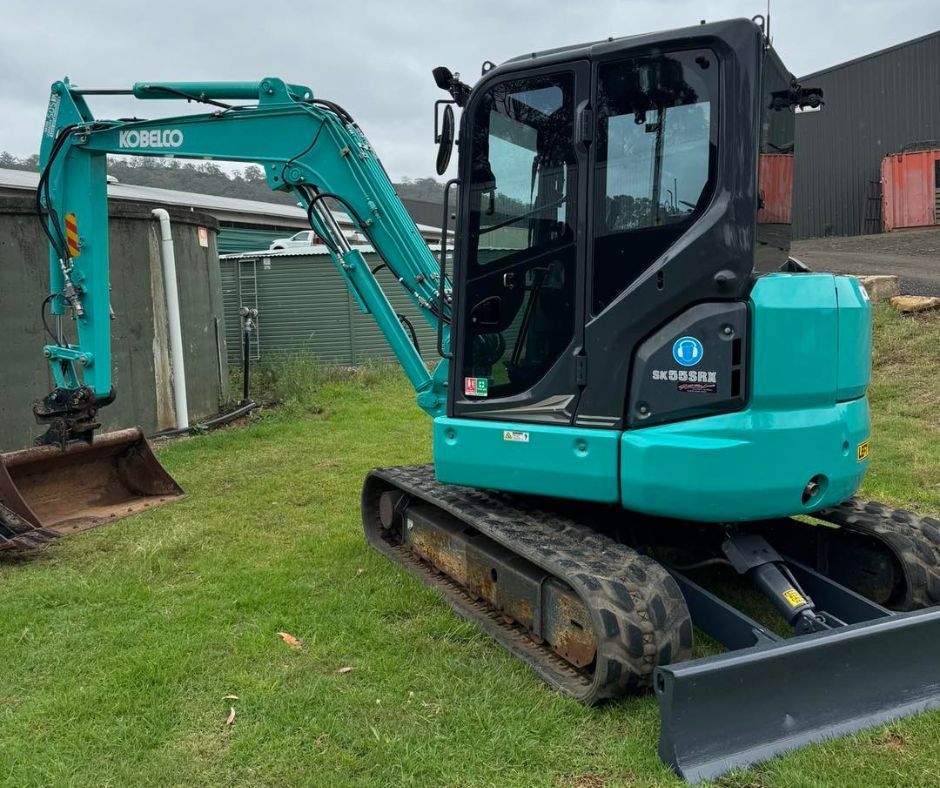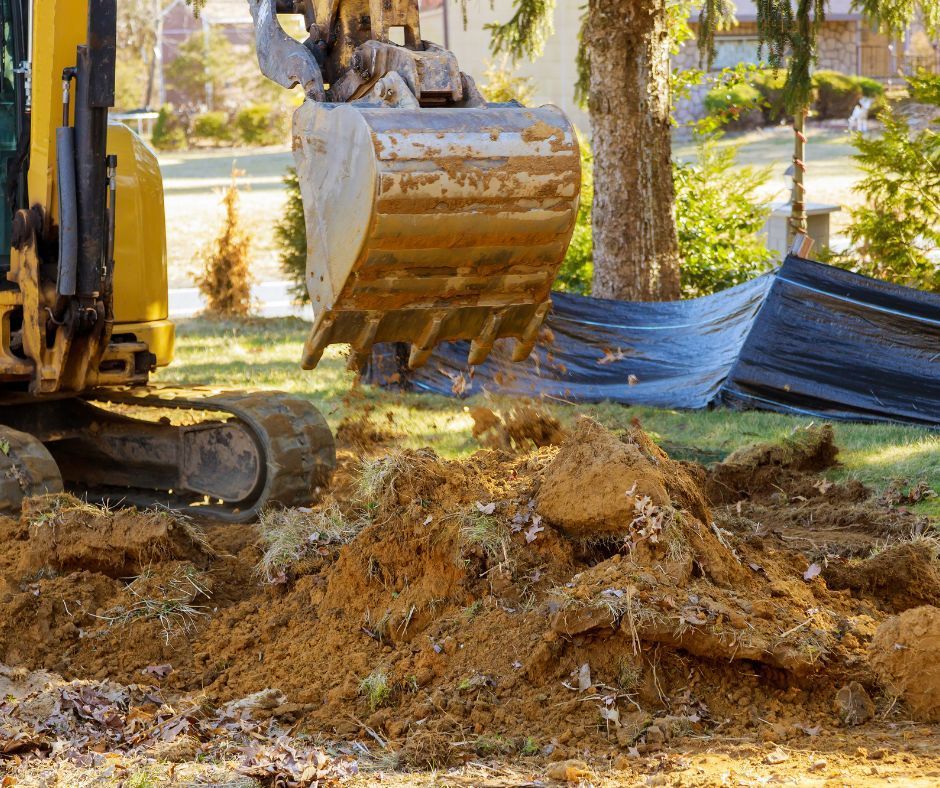What is a Basement Excavation? MRN Excavations Explains It All!
Feeling boxed in? There’s more space under your feet than you think!
Across Australia, homeowners are going underground to overcome space limits, meet council height restrictions and add serious value. Basement excavation turns unused space beneath the ground into garages, guest rooms or income-generating studios.
It’s a smart move, but basement excavating is not a simple, weekend DIY job. If you’re thinking of digging down, here’s what to know before you start.
Overview of the Excavation of Basement
Basement excavation is a clever way to unlock extra storage, living areas or even a home office without expanding your footprint. It is especially popular on sloped blocks where traditional extensions just will not work.
This helps explain what basement excavation is and why it is not your average backyard dig. It needs detailed planning, precise digging and strong engineering to support the structure above. Getting it right means understanding soil, drainage and load-bearing walls to keep your home safe.
What Is Basement Excavation?
Basement excavation is the process of digging below the ground surface to create extra usable space. Think of it as carving out a whole new level beneath your home for storage, living or work areas.
It is not just a bigger hole in the yard. It needs expert skill to manage risks like soil movement, water entry and structural load. You also need to navigate engineering plans and local council rules to get it right and keep it safe.

Planning Your Basement Excavation
Every solid project begins with understanding what basement excavation is and having a clear plan in place. You may need to check a few factors to avoid problems later.
Soil Type
Soil type affects everything, from excavation method to wall support. Sandy, clay or rocky ground? You’ll need the right gear and strategy.
Water Table
A high water table means drainage and waterproofing. Skip this and your new basement might double as an indoor pool.
Legal Requirements
Most councils require a Development Application and Construction Certificate. Get approvals upfront to avoid fines or work delays.
Navigating the Basement Excavating Process
Excavation of a basement is more than just digging a big hole. It is a careful, staged process shaped by your site conditions, goals and local rules to maintain safety and compliance.
Site Preparation
Before any digging begins, the site must be cleared of debris, trees or obstacles. Surveyors then mark out boundaries and levels to guide safe, accurate excavation.
Excavation Planning
A detailed excavation plan outlines each stage of the dig to keep the project on track. This makes sure that machinery, materials and manpower are scheduled efficiently.
Excavating in Phases
Basement excavating digs aren’t done in one go. Working in controlled stages helps manage soil stability and allows structural supports to be added as needed.
Monitoring and Adjustments
Soil movement, weather or unexpected underground conditions can throw a spanner in the works. Constant monitoring helps keep the site safe and the project on schedule.
Groundwater Management
High water tables or heavy rain can flood your site fast. Dewatering and drainage plans must be considered to help keep the excavation area dry and stable.
Shoring and Support Systems
As the dig gets deeper, the surrounding soil must be held back. Shoring systems such as retaining walls or steel bracing keep the walls secure.
Communication
Clear, regular updates between the excavation team, engineers and the client help avoid surprises. Everyone stays aligned on timing, safety and next steps.
Inspection and Quality Control
Engineers and certifiers inspect the work at important stages. These checks help meet compliance and support the building above.
Safety Compliance
Basement digs are risky, so safety rules must be followed. That includes PPE, signage, fencing and incident reporting systems.
Environmental Considerations
The work should not damage nearby trees, water systems or structures. A good plan includes erosion control, noise limits and minimal site disturbance.
Final Preparations and Backfilling
Once the basement structure is in, the area is backfilled and shaped to suit landscaping or further construction. The site is then cleaned and made safe for the next phase.

5 Common Methods for Basement Excavation
These methods offer safe and efficient ways to excavate. Each one is chosen based on site conditions, available space and soil type.
Open-Cut
This method works best on wide, accessible blocks with many rooms around the excavation. It’s straightforward and often the most cost-effective option.
Top-Down
Used when space is limited or nearby structures need protection, this method builds the structure above while digging below. It’s complex but ideal for urban areas.
Bracing Method
Bracing stabilises excavation walls and prevents collapse on narrow or confined sites. It’s commonly used in residential zones with limited clearance.
Anchored Method
Steel anchors are drilled into the surrounding soil to hold support walls in place. This method works well for deeper basements or sandy, shifting ground.
Island Method
A central section is excavated first, leaving a ring of soil that provides initial support. It’s useful for sites with high groundwater or soft, unstable soil.
How to Determine the Best Basement Excavation Method
Not all excavation jobs are created equal. The right method depends on your site’s constraints, soil behaviour and what you’re building.
Type of Construction
New builds offer more freedom since you're starting from scratch. Retrofits under existing homes typically require more detailed planning and specialised excavation techniques.
Soil Type and Topography
Soft clay, rocky ground or steep slopes can impact stability and determine whether support systems are needed. A proper soil test will shape how the dig is done.
Building Size
Larger or deeper basements put more pressure on excavation walls. That usually means reinforced systems, more staging and higher safety controls.
What is Basement Excavation’s Risks and Challenges
Excavation can run into serious issues without proper planning and experienced handling. Here are the common risks that can stall or derail a project:
Soil Instability
Unstable ground can collapse mid-dig if not supported correctly. It's one of the biggest hazards of basement jobs.
Equipment Limitations
Narrow access or steep sites can make it tough to get the right machinery on site. This slows progress and increases manual labour.
Environmental Factors
Heavy rain, erosion or fluctuating water tables can turn your excavation site into a mess. Wet ground is harder to excavate and often requires additional drainage.
Proximity to Other Structures
When you're working close to homes, fences or retaining walls, vibration and movement become a concern. Extra care is needed to avoid damage or disputes.
Permitting or Legal Delays
Council approvals can take time and missing paperwork can bring your job to a halt. It’s important to get the green light before anything starts.
Cost Overruns
Unexpected ground conditions or changes can increase excavation costs beyond the original budget. Having contingency funds and a clear plan helps reduce stress.
Delays Due to Unforeseen Conditions
You might hit rock, pipes or even old building rubble underground. These surprises are common and can cause delays if not managed quickly.
Worksite Hazards or Safety Breaches
Excavation sites are high-risk zones. Without strict safety measures, injuries and stoppages are all too real.
Benefits of Basement Excavating
While the upfront effort is real, the long-term gains are worth it. Here's what you get from going underground:
Increased Usable Space
Whether it’s storage, a gym or a guest suite, you gain extra square metres without changing your home’s footprint.
Boost in Property Value
More livable space adds appeal to buyers and tenants, increasing resale value and rental potential.
Smarter Use of Limited Land
Basements make the most of small or awkward blocks, especially when you can’t build out or up.
Better Protection Against Weather Extremes
Sub-ground rooms stay cooler in summer and warmer in winter. It’s a practical buffer against Aussie heatwaves and cold snaps.
Room for Storage or Recreation
From wine cellars to playrooms, a basement gives you flexible space for what your family needs.
Energy Efficiency in Insulated Sub-Grade Living
Insulated basement walls help regulate temperature naturally, reducing energy bills over time.
Hiring the Experts for the Excavation of Basement
When it comes to the excavation of a basement, you want a team that knows the ground you live on. MRN Excavations is a trusted local name with years of experience tackling residential basement projects across Campbelltown, Wollongong, and Sydney.
Our team understands local council requirements, engineering standards, and how to keep your site safe and compliant.
Ready to get started? Contact us today to book your consultation!



